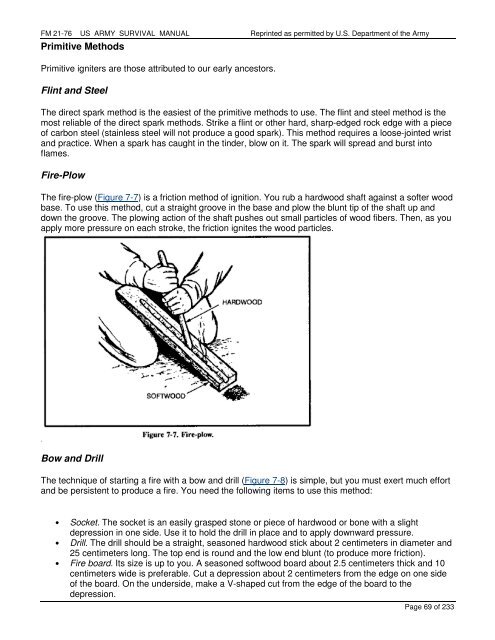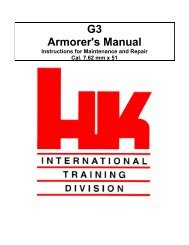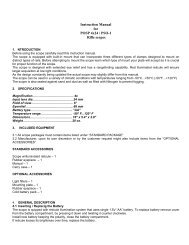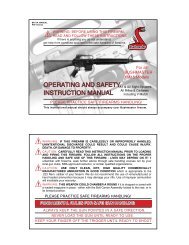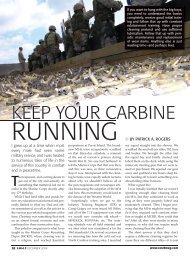FM 21-76 US ARMY SURVIVAL MANUAL - AR15.com
FM 21-76 US ARMY SURVIVAL MANUAL - AR15.com
FM 21-76 US ARMY SURVIVAL MANUAL - AR15.com
Create successful ePaper yourself
Turn your PDF publications into a flip-book with our unique Google optimized e-Paper software.
<strong>FM</strong> <strong>21</strong>-<strong>76</strong> <strong>US</strong> <strong>ARMY</strong> <strong>SURVIVAL</strong> <strong>MANUAL</strong> Reprinted as permitted by U.S. Department of the Army<br />
Primitive Methods<br />
Primitive igniters are those attributed to our early ancestors.<br />
Flint and Steel<br />
The direct spark method is the easiest of the primitive methods to use. The flint and steel method is the<br />
most reliable of the direct spark methods. Strike a flint or other hard, sharp-edged rock edge with a piece<br />
of carbon steel (stainless steel will not produce a good spark). This method requires a loose-jointed wrist<br />
and practice. When a spark has caught in the tinder, blow on it. The spark will spread and burst into<br />
flames.<br />
Fire-Plow<br />
The fire-plow (Figure 7-7) is a friction method of ignition. You rub a hardwood shaft against a softer wood<br />
base. To use this method, cut a straight groove in the base and plow the blunt tip of the shaft up and<br />
down the groove. The plowing action of the shaft pushes out small particles of wood fibers. Then, as you<br />
apply more pressure on each stroke, the friction ignites the wood particles.<br />
Bow and Drill<br />
The technique of starting a fire with a bow and drill (Figure 7-8) is simple, but you must exert much effort<br />
and be persistent to produce a fire. You need the following items to use this method:<br />
• Socket. The socket is an easily grasped stone or piece of hardwood or bone with a slight<br />
depression in one side. Use it to hold the drill in place and to apply downward pressure.<br />
• Drill. The drill should be a straight, seasoned hardwood stick about 2 centimeters in diameter and<br />
25 centimeters long. The top end is round and the low end blunt (to produce more friction).<br />
• Fire board. Its size is up to you. A seasoned softwood board about 2.5 centimeters thick and 10<br />
centimeters wide is preferable. Cut a depression about 2 centimeters from the edge on one side<br />
of the board. On the underside, make a V-shaped cut from the edge of the board to the<br />
depression.<br />
Page 69 of 233


